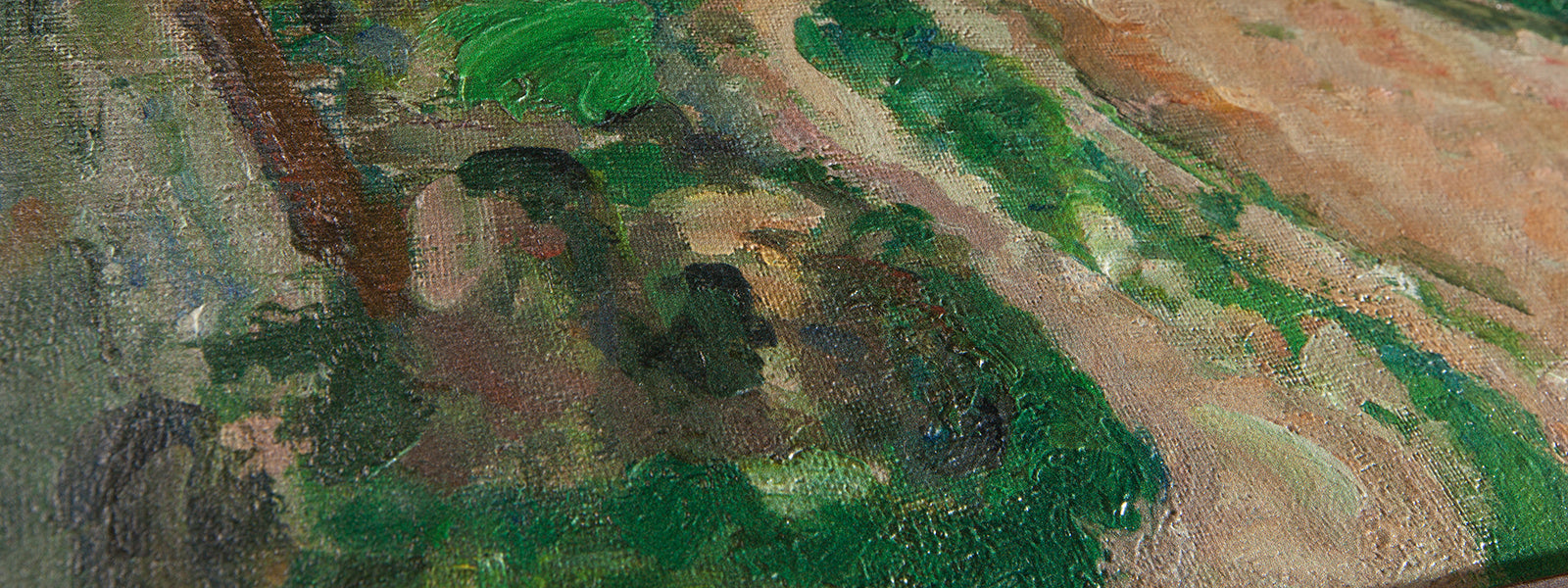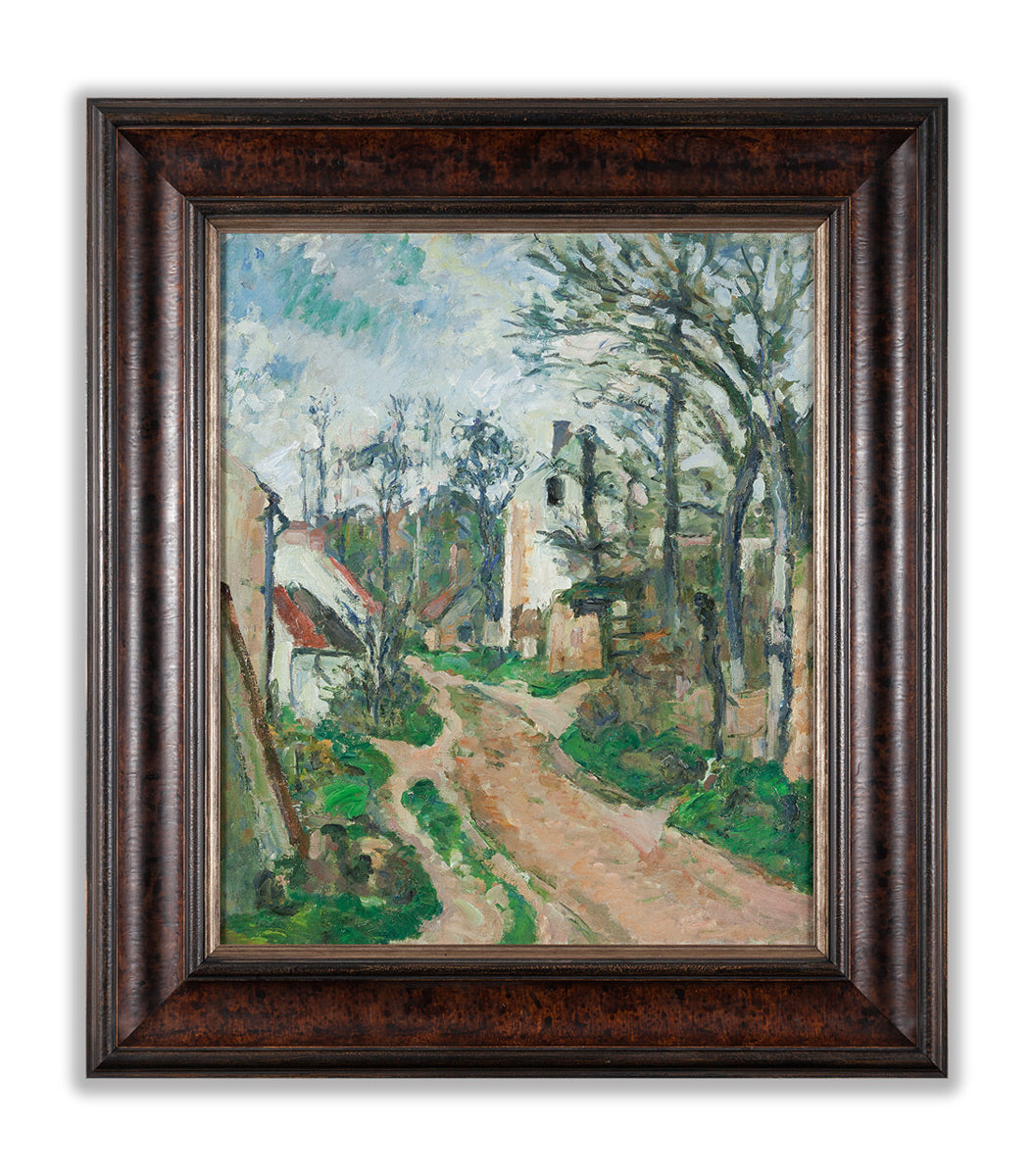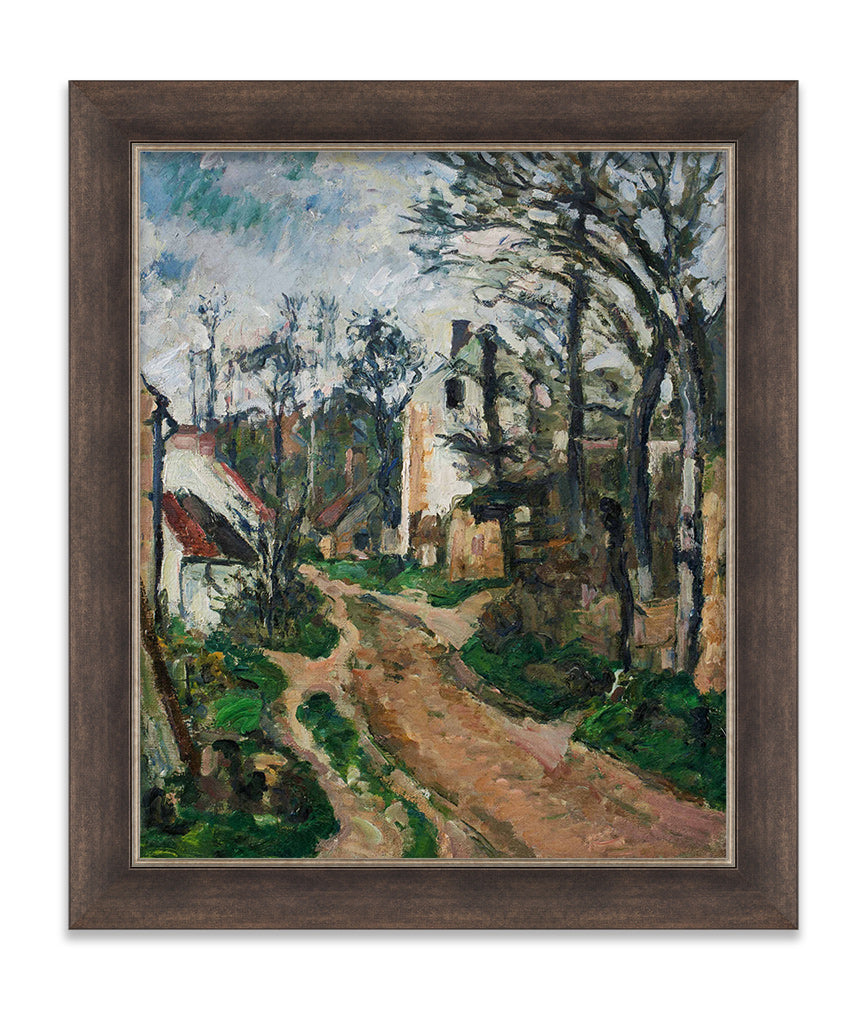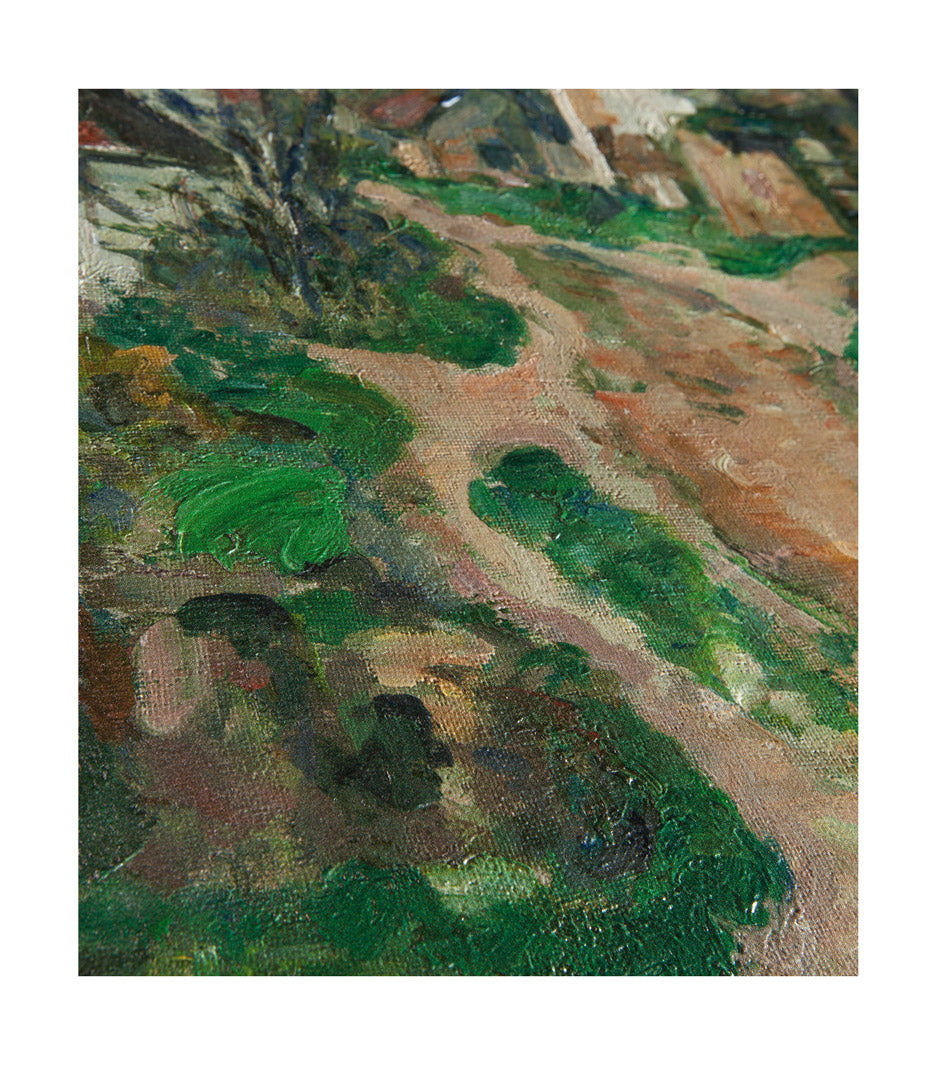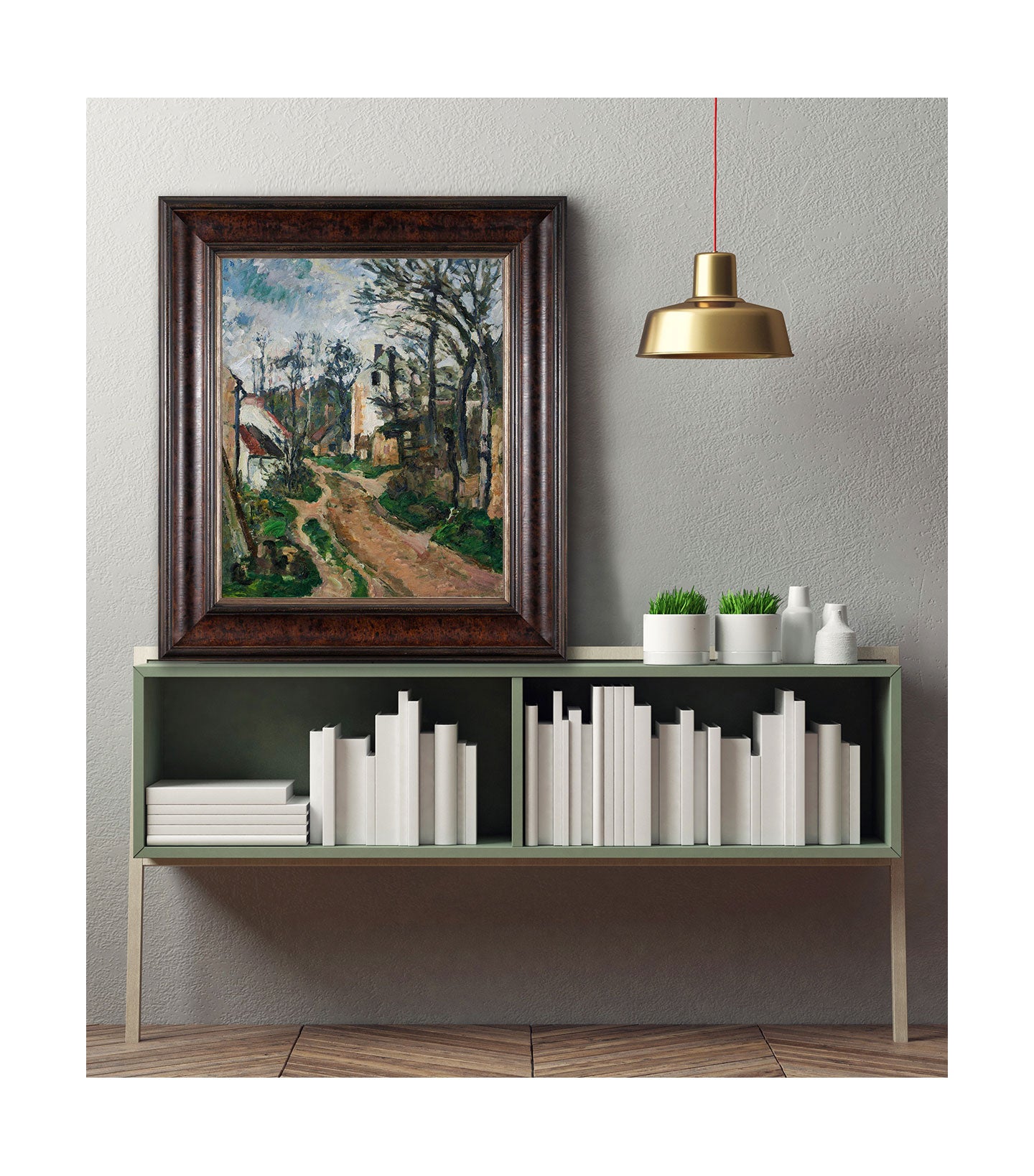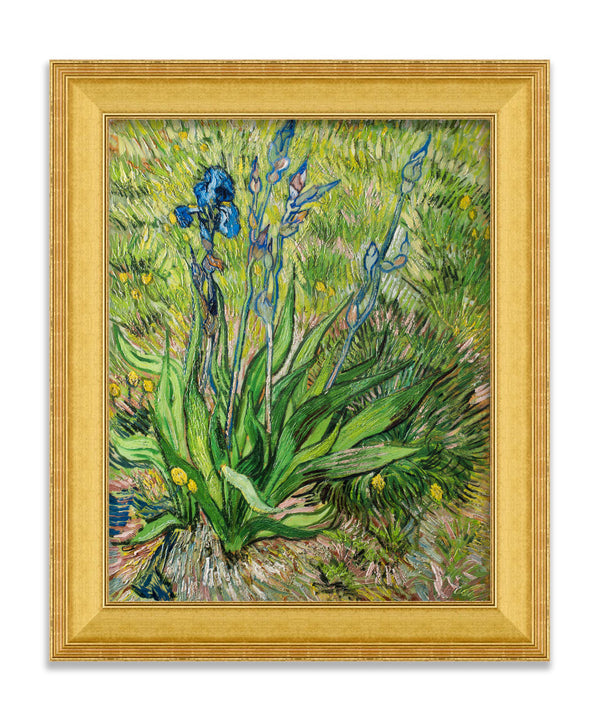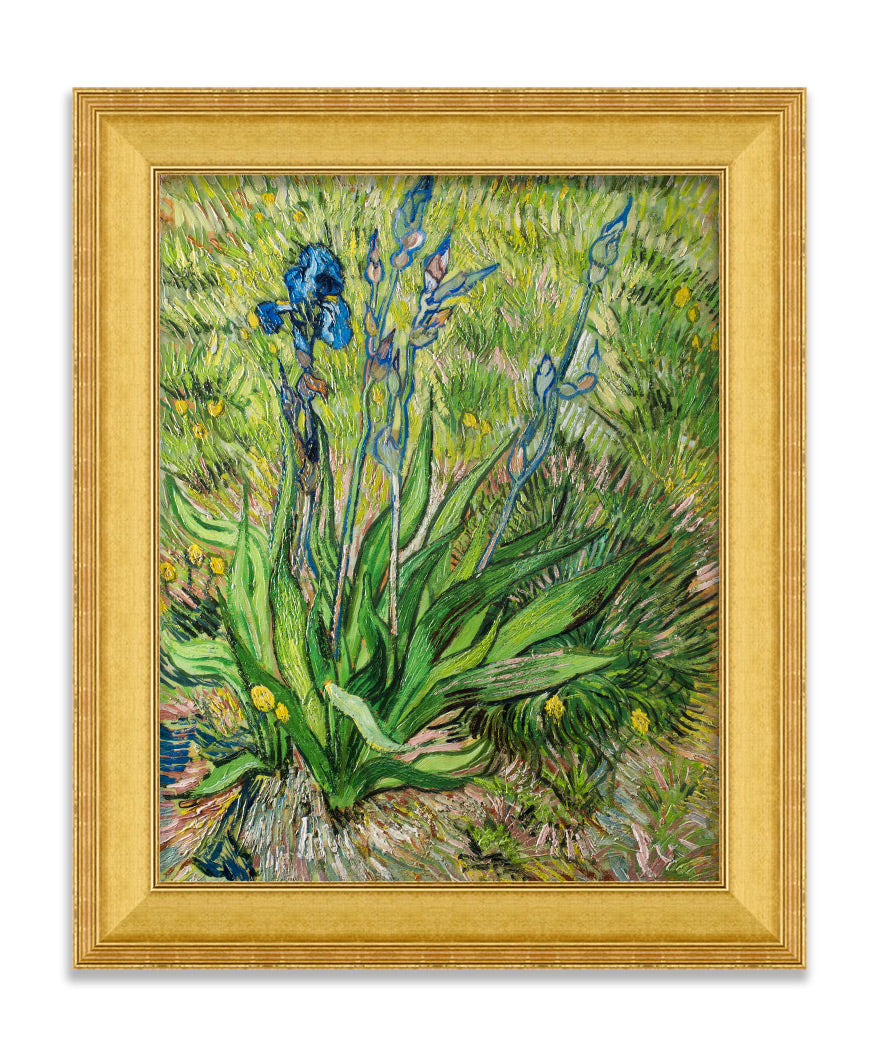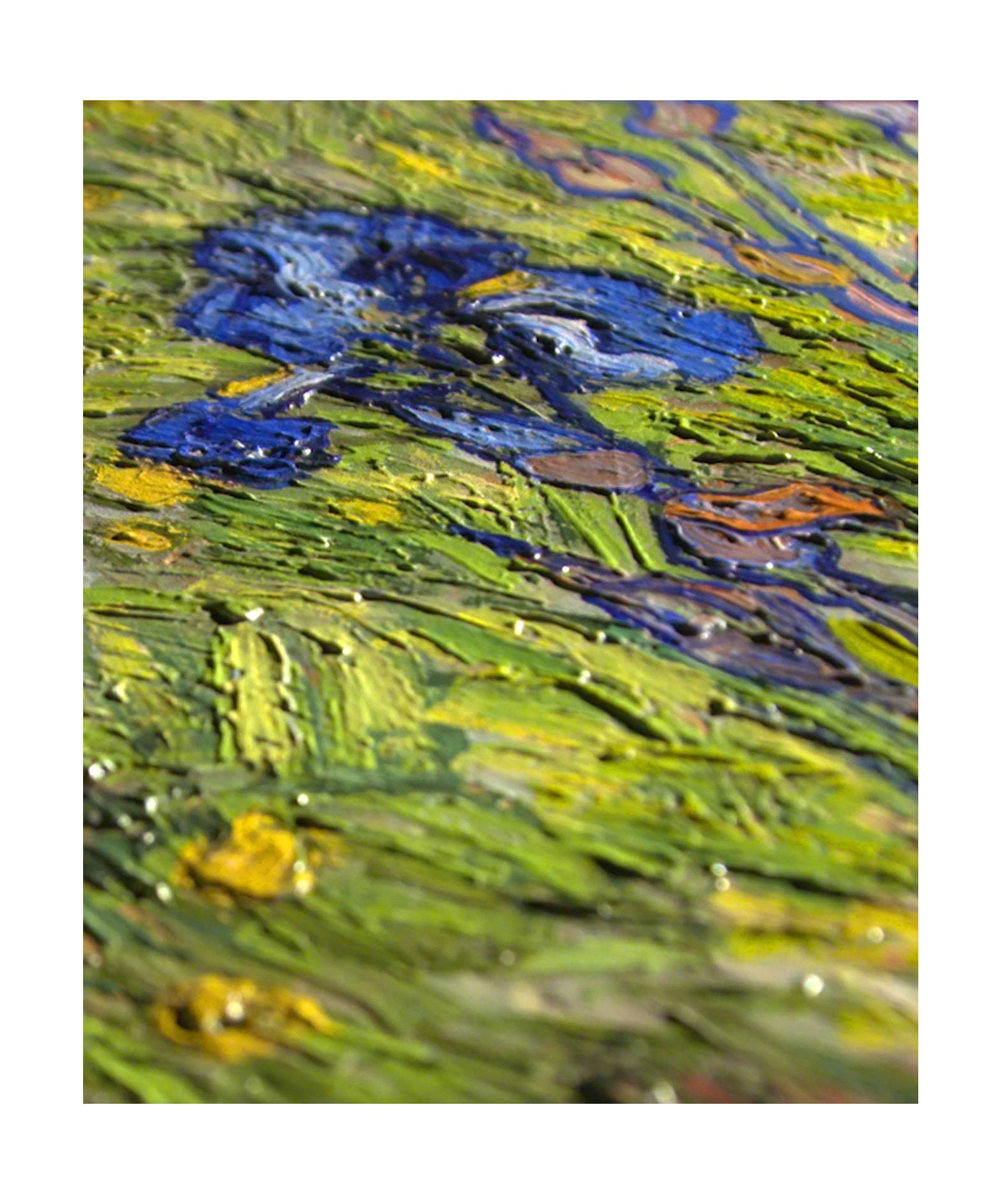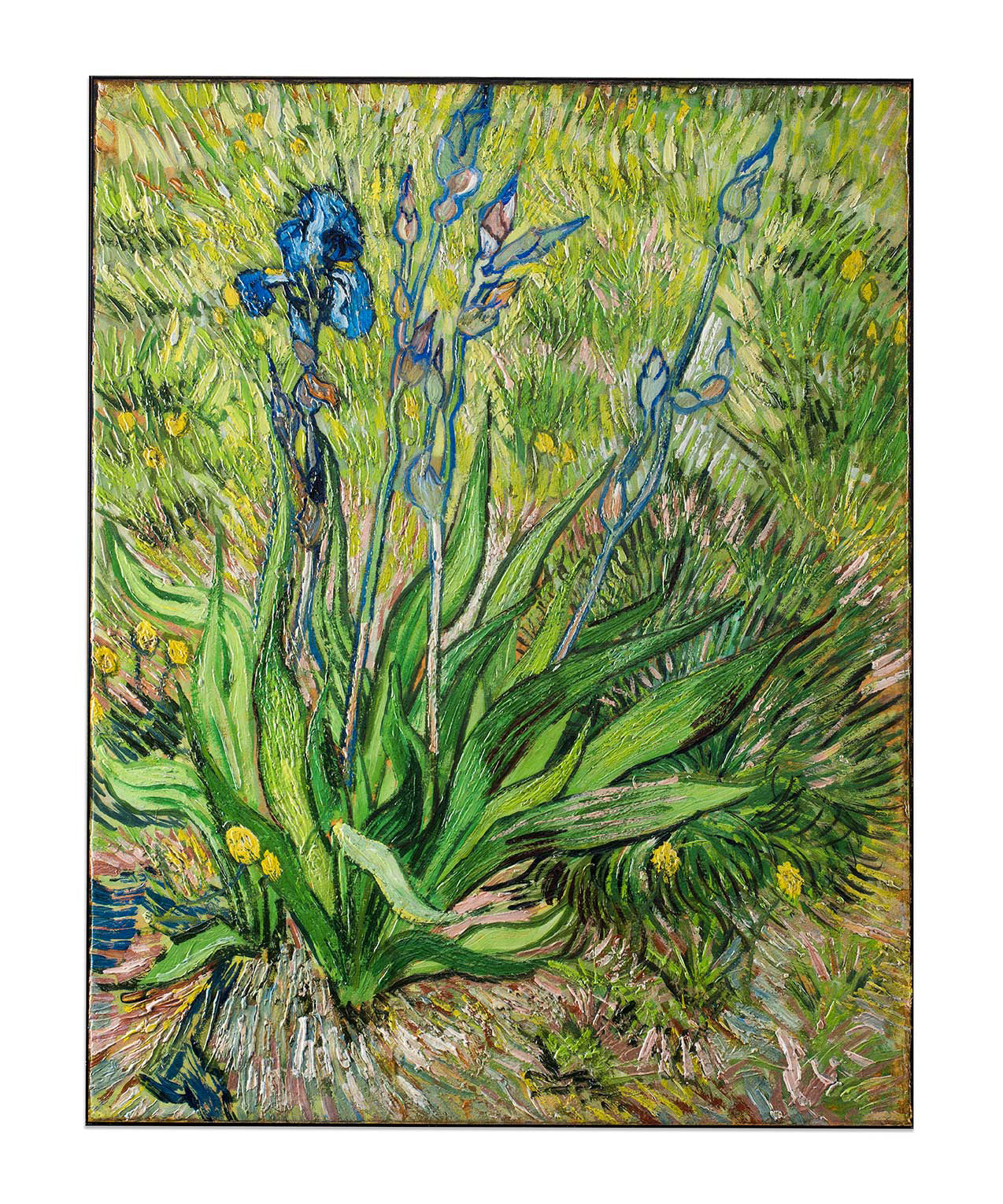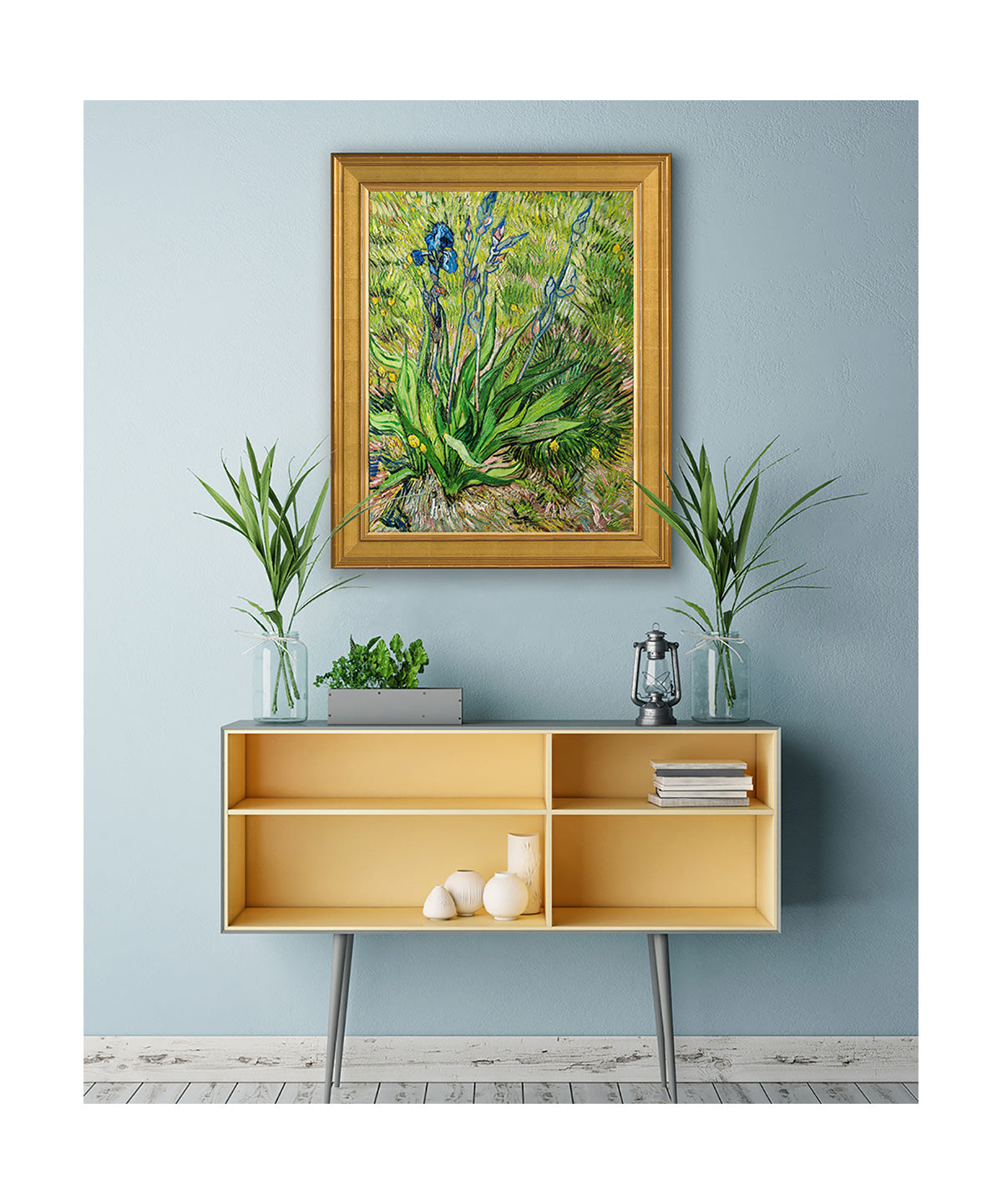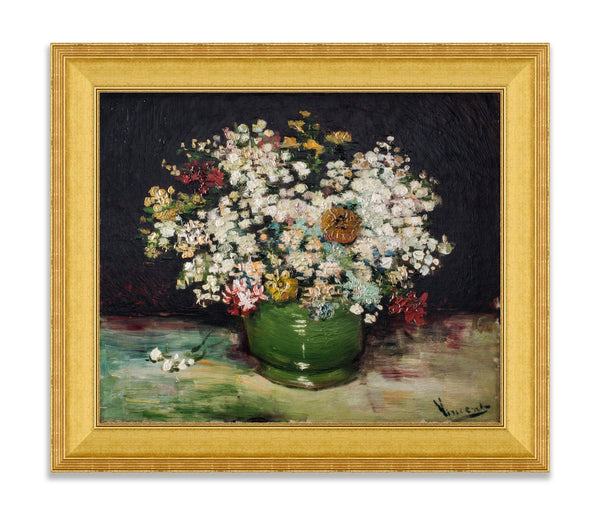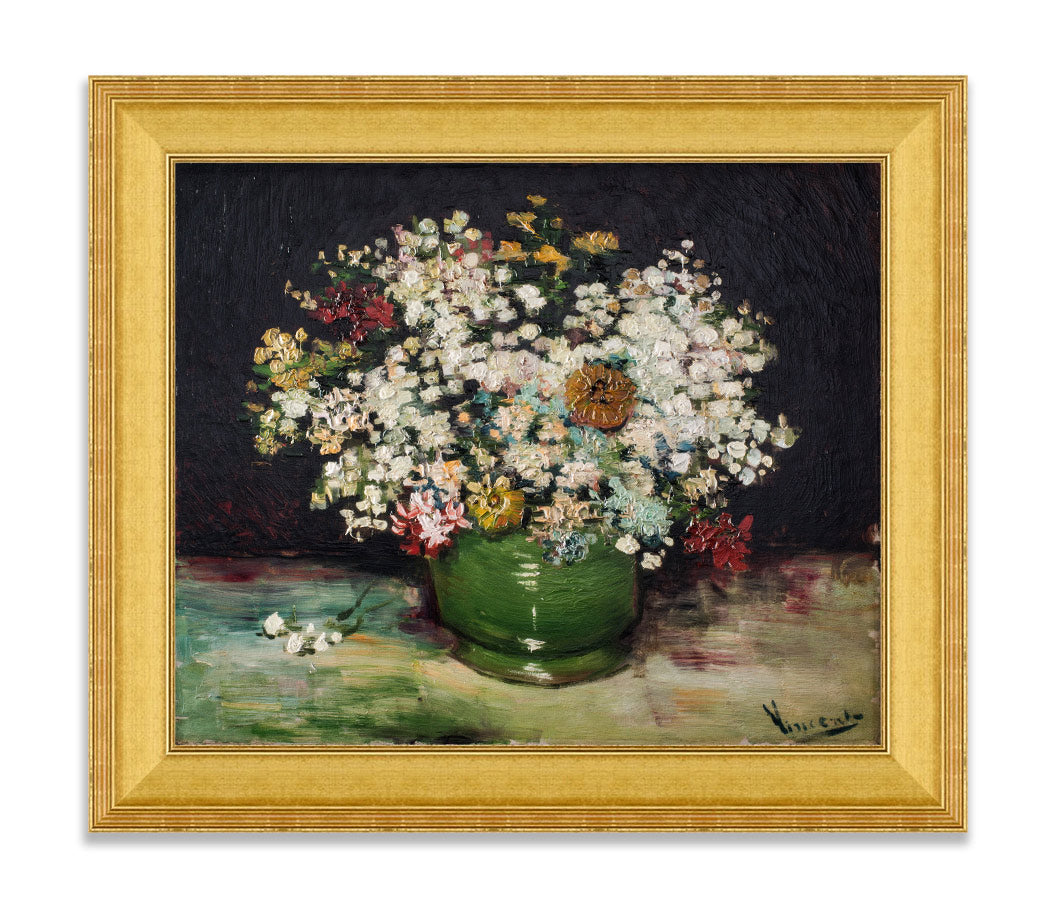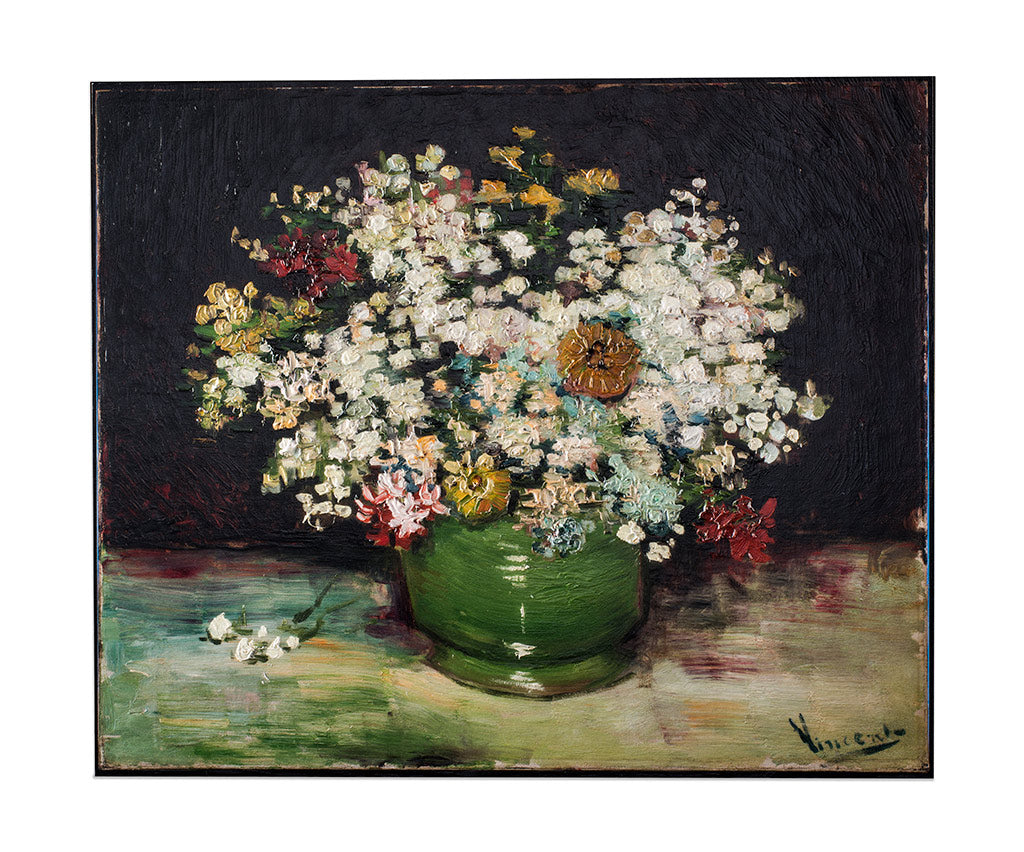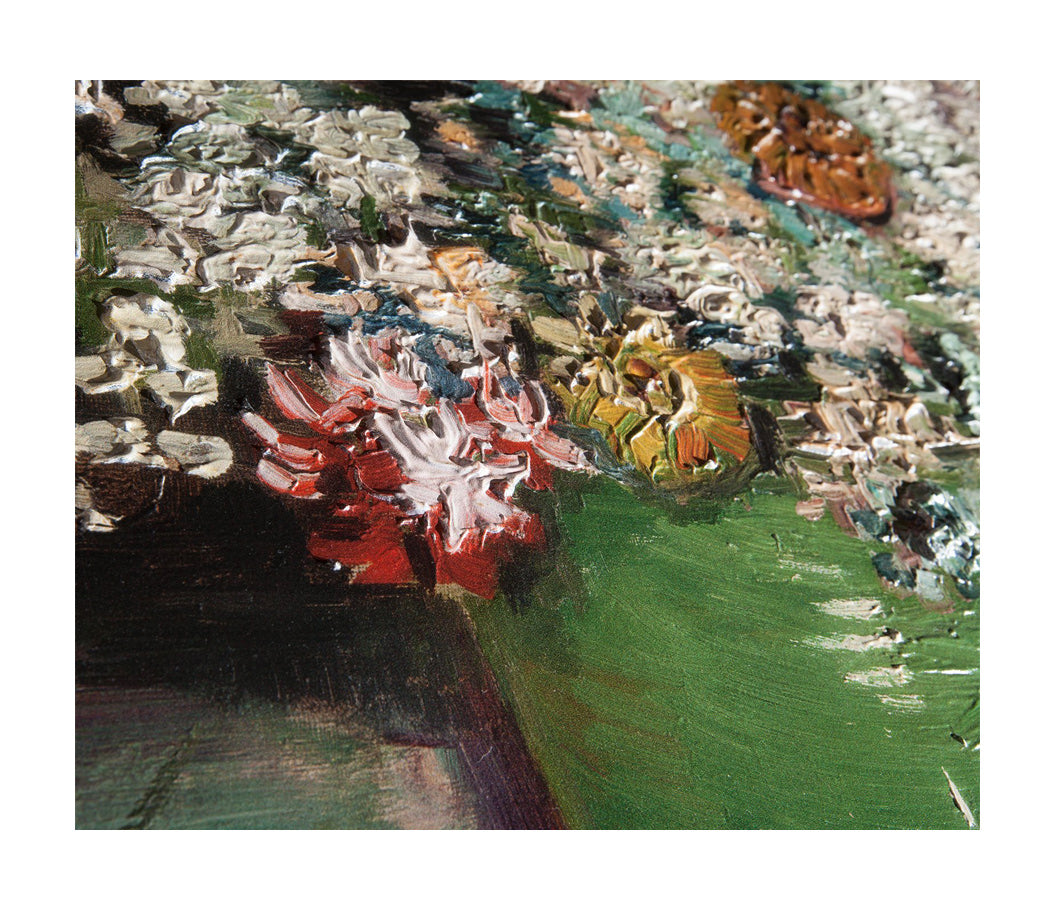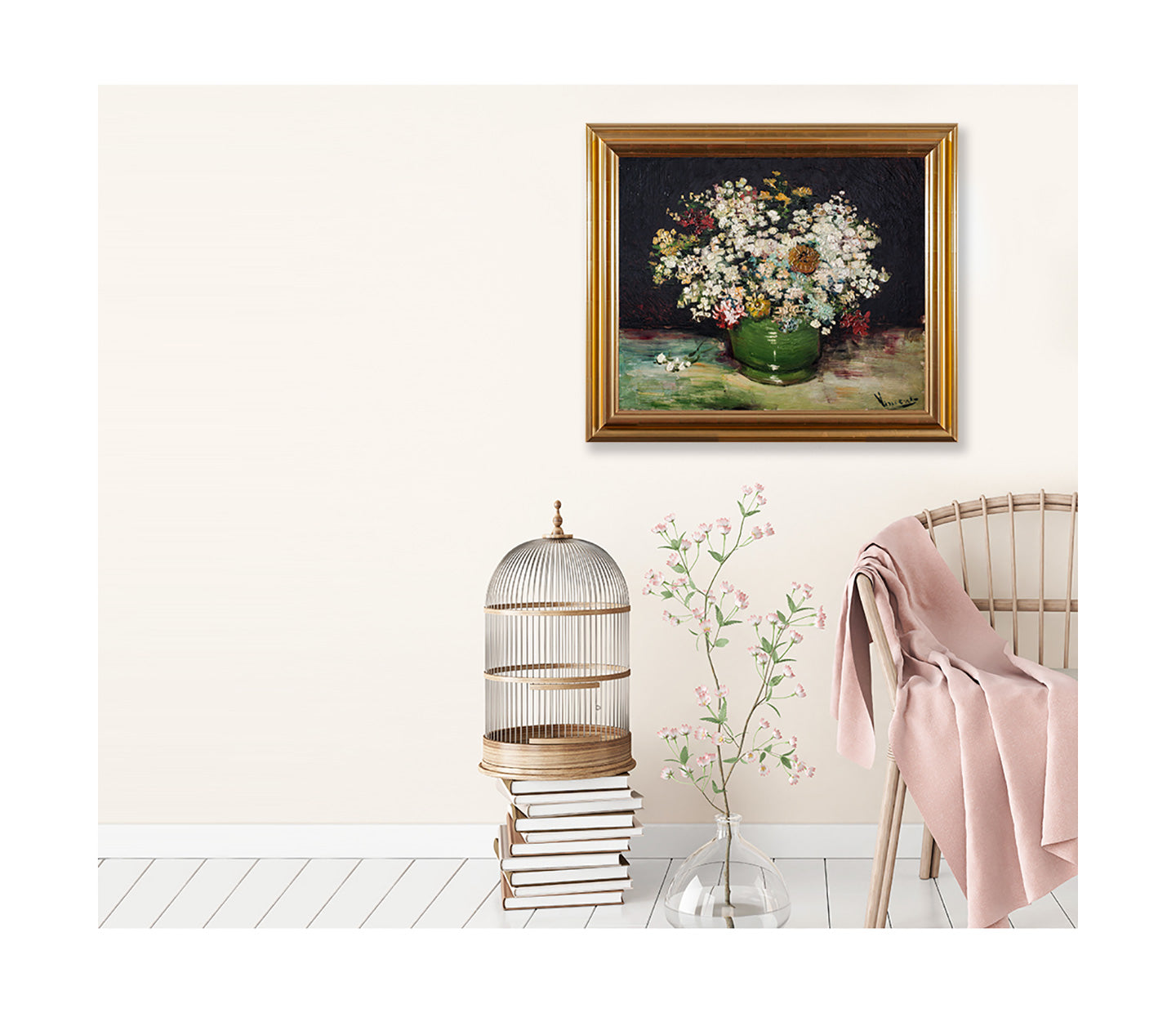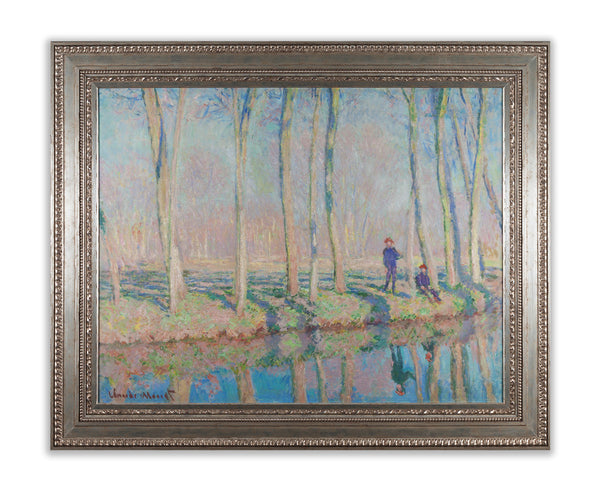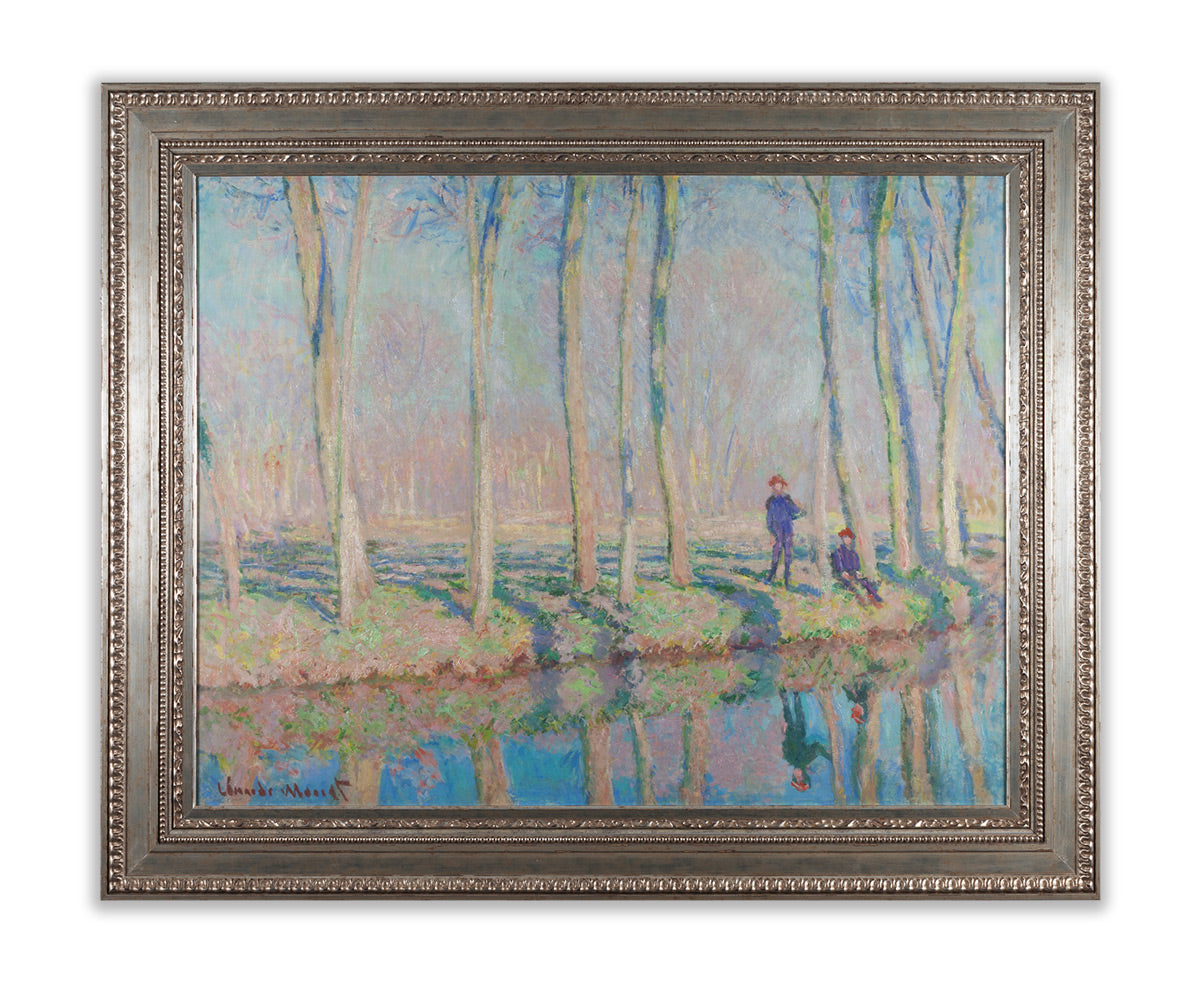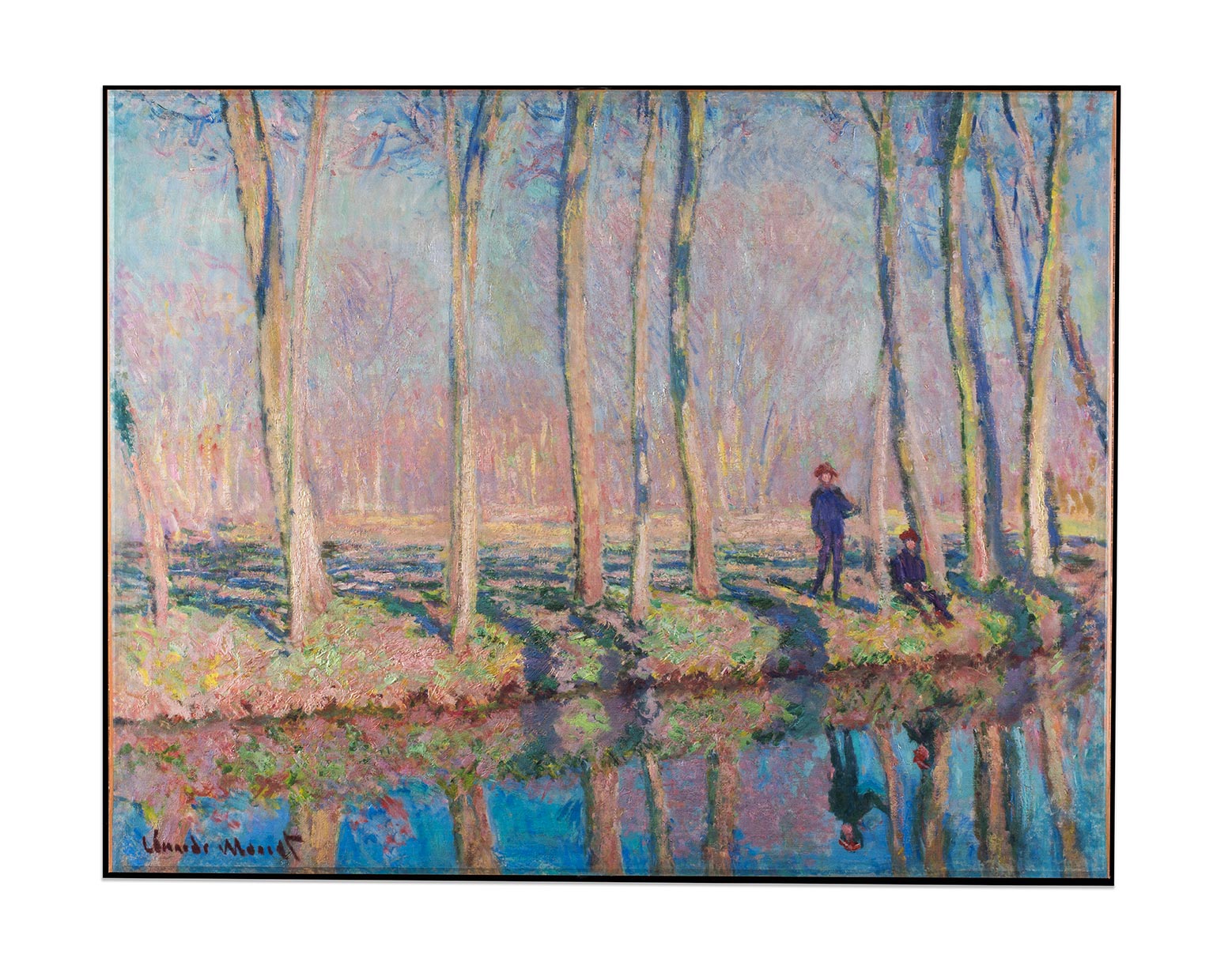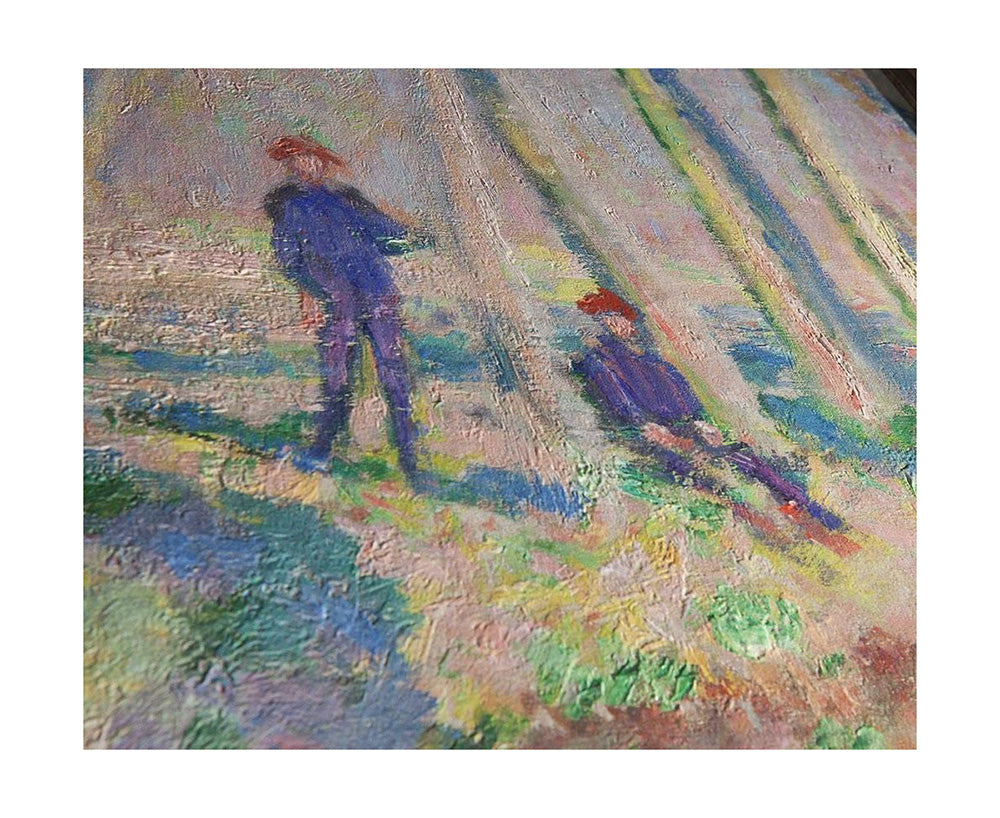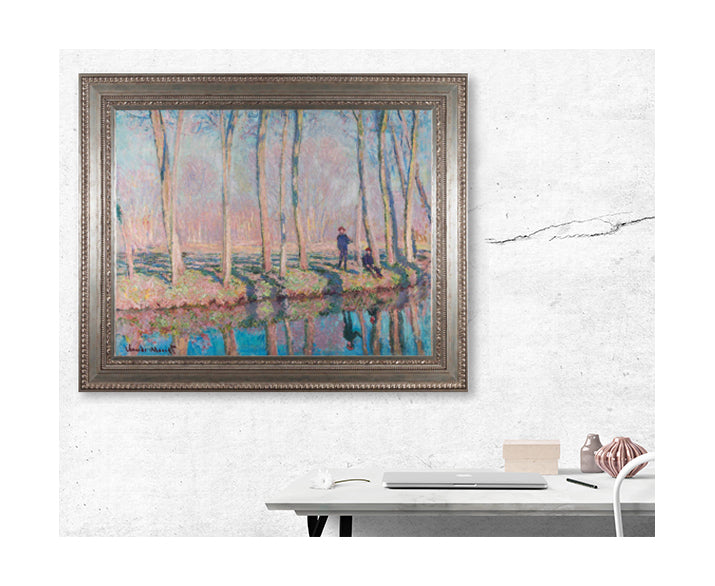REPLICATION FRAME CHOICES
Add your own finishing touch to your Cézanne replication with a choice of three premium hand-crafted Larson-Juhl frames:

Whitman Frame
The Whitman molding is the museum selection, featuring a beautiful finish and handcrafted details for a versatile finish.Finish: Wood - Width: 4" - Height:2 3/16"
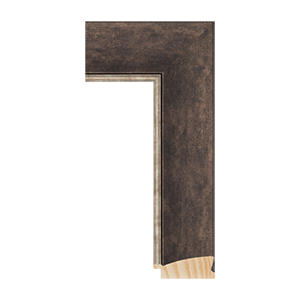
Andover Frame
For understated luxury, the Andover moulding bridges classic contemporary design with complex, antiqued foil finish.Finish: Wood - Width: 2.67" - Height: 1.2"
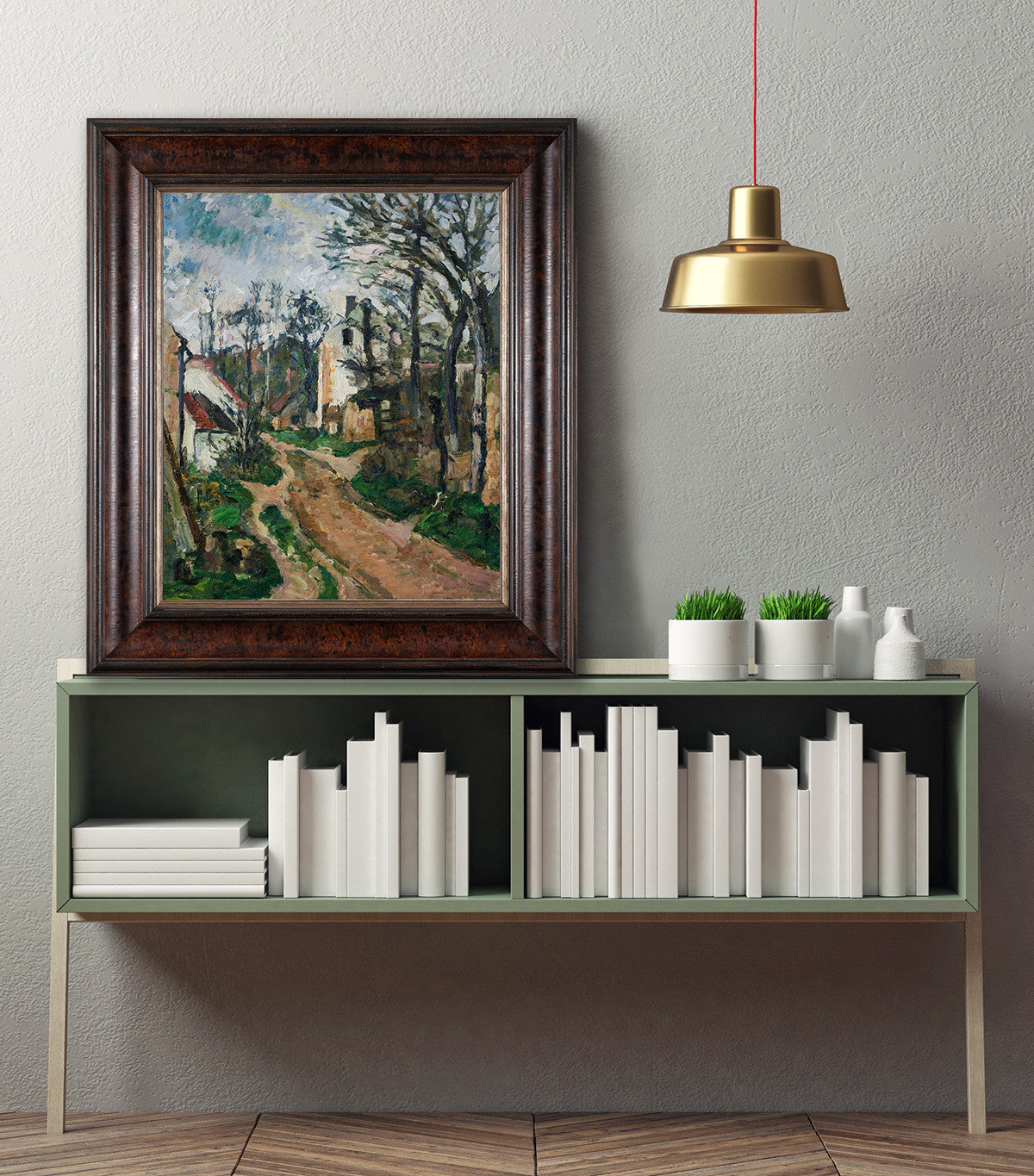
THE STORY BEHIND CÉZANNE'S PAINTING
When Cézanne gave up his legal studies to become a painter in 1861, one of the first artists he met was Camille Pissarro. The two would stay lifelong friends and Cézanne later credited Pissarro for all that he became. Critically, Pissarro took the younger man to paint out of doors and showed Cézanne the importance of careful, structured paint application. These factors set Cézanne on the road to becoming one of the most influential artists of the early twentieth century; his often minimal, analytical and precisely structured paintings changed the way we see the world.
This work was made around the time Cézanne left Paris for the countryside of Auver-sur-Oise, within walking distance of Pissarro’s home in Pontoise. This was in a sense an eventual and full commitment to painting outdoors, and directly from observation.
The artist set himself a challenge in his selection of viewpoint; a rising, rutted road winding through a jumble of buildings toward a hidden horizon. In terms of touch, we can see residues of his heavy-handed early style, in which he relied heavily on the palette knife to plaster on slabs of paint. This painting shows no evidence of knife work, but he uses his brush to assertively lay on fat smears of bright paint, especially in the blustery sky. Elsewhere, however, we can see a more considered approach, with serried dabs of paint used to articulate form – these touches would later become the hatched faceting by which he broke down and reassembled his visual world – the hallmark of his later work.
Additionally, we can see him making sense of this rather jumbled scene by emphasizing the verticals and diagonals of the buildings and trees, and flattening the planes between them – this tendency toward restructuring perspective also a characteristic of his later work, that would influence the course of later painting, particularly Cubism.
